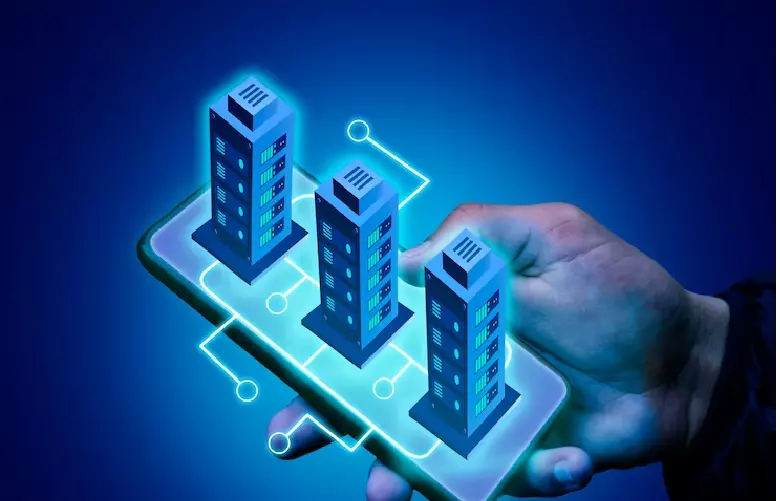Want to understand the difference between IaaS PaaS and SaaS? They are the main cloud service models. Each IaaS PaaS SaaS in cloud computing model covers different users’ and companies’ needs. Their expanded forms are infrastructure-as-a-service (IaaS), platform-as-a-service (PaaS), and software-as-a-service (SaaS).
Secure a successful career by availing a course of DevOps cloud engineering to understand what is a devops engineer and what does a devops developer do. Check out the website for detailed cloud engineering course.
The Cloud Service Model
The difference between IaaS PaaS and SaaS can be understood from the diagram above. Understanding the difference between Google Cloud & AWS will also be helpful.
Uses of IaaS PaaS SaaS:
- Scalability: IaaS PaaS SaaS in cloud computing enables businesses to scale their computing resources up or down as per their needs, without the need of additional hardware or infrastructure.
- Cost Effective: IaaS PaaS SaaS in cloud computing eliminates the need for businesses to invest in expensive hardware and infrastructure, reducing capital expenditure significantly.
- Flexibility: IaaS PaaS SaaS in cloud computing enables remote work and collaboration i.e., businesses can flexibly access their computing resources from anywhere on the planet.
- Reliability: IaaS PaaS SaaS in cloud computing ensures the businesses can access their data and applications anytime, anywhere by offering robust security and backup measures.

POSTGRADUATE PROGRAM IN
Multi Cloud Architecture & DevOps
Master cloud architecture, DevOps practices, and automation to build scalable, resilient systems.
Difference Between IaaS PaaS and SaaS
Find detailed difference between IaaS PaaS and SaaS here –

Difference Between IaaS, PaaS And SaaS Technical Understanding:
(i). IaaS: It offers provision processing, networking components, data storage and other functions. It represents the most extensive level of cloud computing. it enables customers to not only extensive software customization options but also full virtual server capabilities and immense data storage capacity. Examples of IaaS providers:
- Amazon Web Services (AWS): AWS is one of the largest IaaS providers in the world, offering businesses access to a wide range of computing resources, including virtual machines, storage, and databases.
- Google Cloud Platform (GCP): GCP is a popular IaaS provider that offers businesses access to computing resources, including virtual machines, storage, and databases.
- Microsoft Azure: Another popular IaaS provider that offers businesses access to a wide range of computing resources, including virtual machines, storage, and networking.
(II). PaaS: PaaS enables companies to deploy their own or acquired application within a cloud computing infrastructure, rather than being solely dependent on SaaS vendors. Examples of PaaS Providers: Some examples of PaaS providers include Google App Engine, Microsoft Azure, and Amazon Web Services (AWS) Elastic Beanstalk.
(III). SaaS: SaaS is the least extensive and the most common forms of cloud computing, with the software developer providing hosting of a software application through a standard internet browser. Example of SaaS Provider:
- Microsoft Office 365: Microsoft Office 365 is a cloud-based productivity suite that includes applications such as Word, Excel, PowerPoint, and Outlook, enabling businesses to access their documents and files from anywhere in the world.
- Zoom: A cloud-based video conferencing software that enables businesses to conduct virtual meetings, webinars, and online events with their team members and clients.
- Salesforce: Salesforce is a cloud-based customer relationship management (CRM) software that enables businesses to manage their sales, marketing, and customer service operations from a single platform.
- Dropbox: Dropbox is a cloud-based file sharing and storage service that enables businesses to store and share their files securely with their team members and clients.
Difference Between IaaS, PaaS And SaaS in POPULARITY:
In the digital world today, businesses are rapidly adopting new technologies to streamline their operations, reduce costs, and increase efficiency. One such technology that has gained tremendous popularity in recent years is IaaS PaaS SaaS in cloud computing model. IaaS PaaS SaaS in cloud computing has transformed the way businesses operate, enabling them to access computing resources on-demand over the internet, without the need for physical hardware and infrastructure. Cloud computing is an emerging technology among all leading business hubs like Google, IBM, AWS, Microsoft, Dropbox, etc.

82.9%
of professionals don't believe their degree can help them get ahead at work.
Percentage of Rise in IaaS PaaS SaaS:
One of the major comparative factors for this GCP vs AWS is the market share & its growth rate. AWS currently has the largest market share in the cloud computing industry, with over 30% market share, while GCP has around 9% market share.
However, GCP is growing at a faster rate compared to AWS, with a growth rate of around 61% in the past year, compared to AWS’s growth rate of around 33%. This indicates that while AWS currently dominates the market, GCP is rapidly gaining ground and is expected to continue to grow in the future.
Cloud Services – IaaS PaaS SaaS
- Cloud services refer to any computing services that are provided through the internet on a pay-per-use or subscription basis.
- Cloud services are easy to access, increase efficiency, and makes tasks easy for team members.
- It is categorized into four cloud computing networks namely public, private, community and hybrid network.
- Cloud services are provided by cloud service providers, such as AWS, GCP etc.
IaaS PaaS SaaS Advantages & Disadvantages

Which Model Should I Choose For My Business?
- Business requirements: The chosen service models of cloud computing should align with the business specific requirements. For example, if a business requires complete control over their infrastructure and wants to customize their applications, IaaS model will be the best fit. However, if the business requirement is to develop and deploy applications quickly undoubtedly about underlying infrastructure, a PaaS model will be suitable.
- IT expertise and resources: The level of IT expertise and resources available within the business should be considered. If the business has dedicated IT team with expertise in management and maintenance of infrastructure, an IaaS cloud computing model is best to choose. However, if the business does not have a dedicated IT team, a SaaS model more suitable, as it requires less IT resources.
- Budget: The cost of the cloud service model is an important aspect. Business should choose service models of cloud computing that is within the budget and provide necessary features and functions required to meet the business needs.
- Scalability: The cloud service model chosen should be scalable to meet the growing needs of the business. Businesses should choose a cloud service model that can easily scale up or down based on the changing needs.
Conclusion:
IaaS PaaS SaaS cloud computing offers immense potential advantages, including lower IT costs and greater business flexibility. Completely benefiting from cloud computing, though requires understanding of how to provide services, organization needs, the potential vulnerabilities associated with such a migration and how various compliance and assurance needs are to be met. IaaS PaaS SaaS is thus a boon in could computing.
Can I use multiple models together?
How do IaaS PaaS SaaS relate to cloud computing?
IaaS PaaS SaaS can be used together?
How do IAAS PAAS SAAS affect my IT infrastructure?
What are the security concerns related to using IAAS PAAS SAAS?
- The lack of ability to comply with regulatory compliances.
- Higher probability of cyber-attacks.
- Higher probability insider data breaches.
Updated on December 14, 2024
